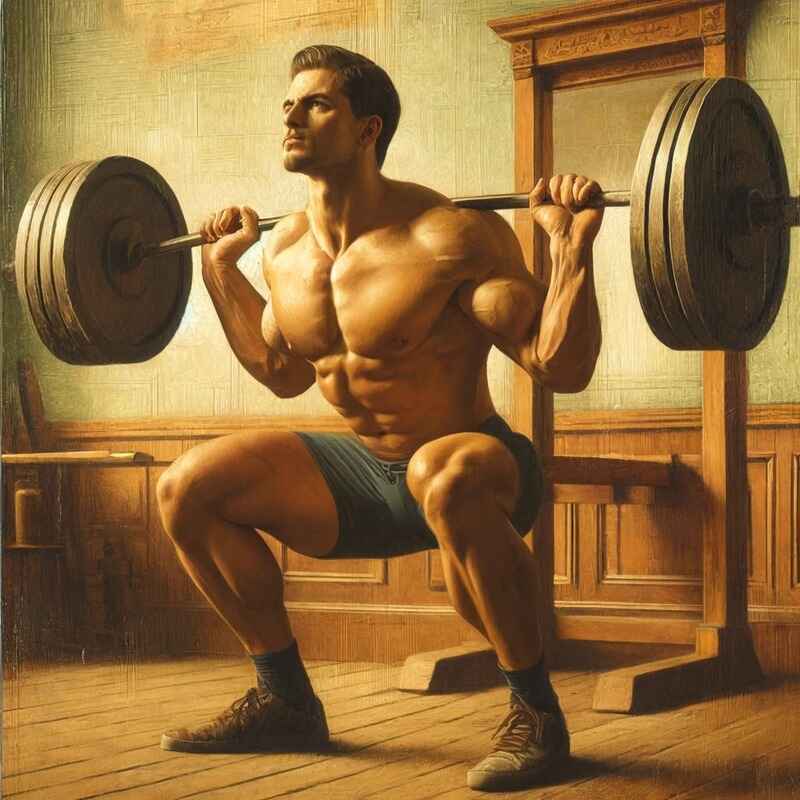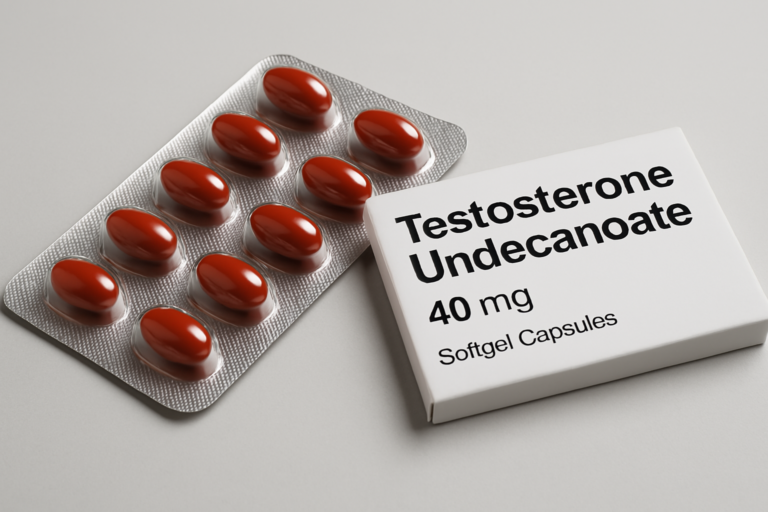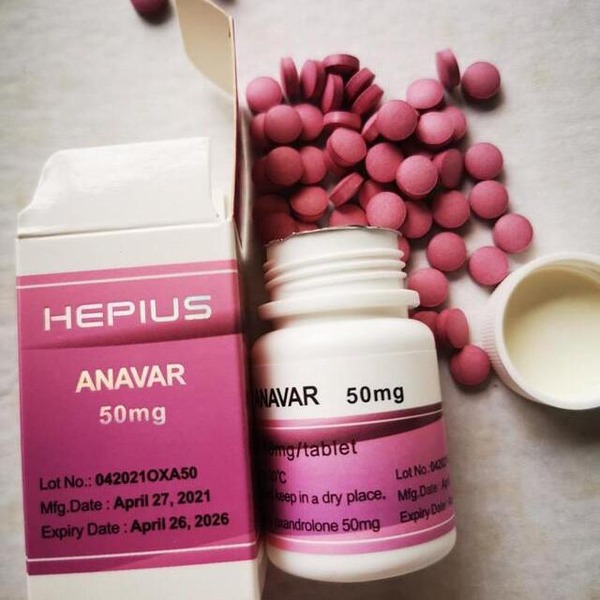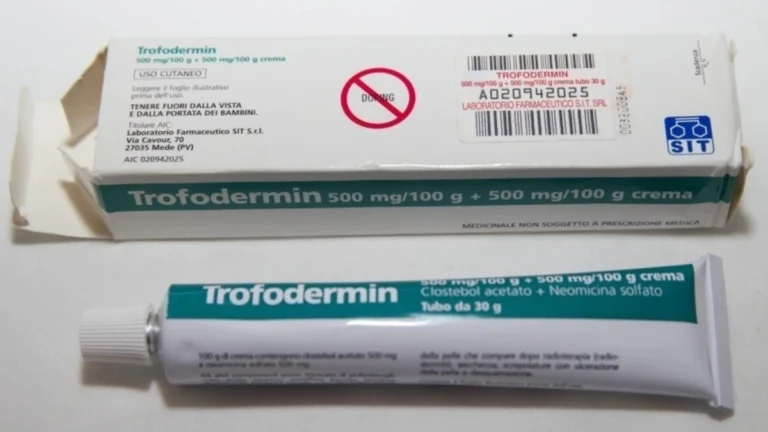A BEGINNERS GUIDE TO UNDERSTANDING STEROIDS AND THEIR EFFECTS
An important first step understanding exactly what steroids are and how they were developed, how they work, and how athletes use them. Anabolic steroids are not mysterious wonder drugs; they are simply man-made versions of the primary male sex hormone, testosterone.
Hormones are one of the body’s major regulatory mechanisms. Both men and women have natural hormones that serve as the controllers of the almost infinite number of chemical reactions that take place within our bodies. Hormones actively “turn on” or “turn off” a gene so as to alter the supply of cell components or influence the rate of chemical processes in the body. For example, hormones can tell muscle cells to produce specific proteins from raw materials within the body so that muscle tissue mass will increase. Hormones also can activate genes in skin cells to influence the growth of facial hair. Hormones regulate the supply of raw materials within the cells and often work directly to speed up or slow down certain biochemical reaction rates.
Two organs in the brain, the pituitary and the hypothalamus, control many hormonal functions. The thyroid gland and the pancreas also produce hormones. The group of hormones that are produced by the adrenal gland and ovaries in women, and the adrenal gland and testes in men, consist of a special type of lipid (fat) called steroids, which comes from a Greek word that means solid. The human body is capable of producing more than 600 different types of steroids, including testosterone, and a number of them exhibit male hormone-like activities. This family of compounds is known as androgens. The word androgen is derived from the Greek roots andro (meaning male) and gen (meaning to produce) and refers to male sex hormones.
The natural supply of testosterone in adult males is produced by the Leydig cells located within the testes. (Women and young boys do have a small amount of testosterone in their bodies that is produced by the adrenal gland.) Very little testosterone is stored within the body so that production must be more or less continuous. Testosterone is responsible for both the androgenic (masculinizing) and anabolic (tissue-building) effects that take place during puberty and continue in adulthood. It is the significant increase in the production of testosterone in a young male that precipitates puberty.
When testosterone exerts its effects in a pubescent male, the androgenic effect is responsible for an increase in the length and diameter of the penis, increased sex drive, and the appearance of pubic, axillary, and facial hair. The anabolic effects of testosterone during puberty include an increase in height, deepening of the voice, and an increase in muscle mass and strength, along with a decrease in body fat. All these changes take place without any physical exercise or training.
The principal reason for the difference in outward appearance of males and females (other than genitals and pelvic shape) is that males produce approximately 10 to 15 times more testosterone than women. Thus, testosterone is the primary substance that makes men look like men, and the absence of high levels of testosterone makes women look like women. This point is well-illustrated by looking at many of today’s women bodybuilders who have altered their body shape by taking steroids, causing it to become masculine in appearance.
Anabolic steroids are primarily a consequence of research to develop drugs that would separate the tissue-building capability of testosterone from its masculinizing properties. This separation has never been fully achieved. Consequently, the proper name for this class of hormones is anabolic-androgenic steroids, although they are usually referred to simply as anabolic steroids or steroids.
Don’t confuse anabolic steroids with corticosteroids such as prednisone or cortisone. Corticosteroids are hormones produced by the adrenal glands, and their biological properties are quite different from those of anabolic steroids. Corticosteroids like prednisone or cortisone are potent anti-inflammatory drugs used in medicine to treat conditions such as asthma and muscle strains and sprains. Their effect is catabolism (protein metabolism or breakdown) rather than anabolism (tissue protein building).
HOW TO TAKE STEROIDS
Anabolic steroids can be taken either by mouth, by injection, or, more recently, by skin creams or patches. If an individual simply swallowed a dose of testosterone, however, it would be quickly inactivated by the process of metabolism and cleared from the body through the liver. Steroids that are taken orally have had their chemical structure altered to slow their removal from the body by the liver but are more toxic to the liver. Steroids taken by intramuscular injection or skin application also have been chemically altered to slow their release into circulation.

Anabolic steroids have traditionally been taken in cycles, which are episodes of use lasting 6 to 12 weeks or more. Athletes often take more than one steroid at a time in a fashion known as stacking. In an attempt to avoid developing a tolerance to a particular anabolic steroid (plateauing), some users stagger their drugs, taking different anabolic steroids in an overlapping pattern, or they will stop taking one drug and start another. Steroid users often will pyramid their administration patterns, moving from a low daily dose at the beginning of the cycle to a higher dose, and then tapering the dose back down toward the end of the cycle. It should be noted that none of these steroid administration strategies has been shown to be effective.
In addition, individuals may use other drugs concurrently with anabolic steroids to counteract some of the common adverse effects of steroids. These drugs include diuretics (to handle fluid retention), antiestrogens (to prevent “breast” development, called gynecomastia), human chorionic gonadotrophin (to prevent testicular atrophy), and anti-acne medications. This type of polypharmacy is called an array. The frequency of this multiple drug use and the frequency of the steroid administration patterns described above are poorly documented.
The dosage of anabolic steroids taken depends on the sport as well as on the perceived needs of the athlete. Male endurance athletes use steroids primarily for their alleged effect of lowering recuperation time between workouts, and they use dosages at or slightly below what the body normally produces, about 7 milligrams a day of testosterone. Although sprinters desire similar results, the strength and power requirements of their activity result in dosages that are approximately 1.5 to 2 times normal levels.
Participants in the traditional strength sports who are seeking to “bulk up” have generally used dosages that exceed the body’s normal production by 10 to 100 times or more. Administration patterns vary among athletes within a particular sport, based on each athlete’s training goals, how he responds to the drugs, and on the presumed physiologic effects of different anabolic steroids. Women, regardless of sport, are generally thought to use lower dosages of anabolic steroids than men because it takes less for them to obtain the desired effect.
HOW STEROIDS WORK
As was stated earlier, anabolic steroids were adopted initially by athletes in power sports such as weight lifting and football to increase strength and muscularity. From the beginning, these athletes consistently reported that the drugs also reduced their recovery time between workouts. That meant that they were able to work out more frequently, for longer periods of time, and with greater intensity. These observations by athletes very likely played an important role in the diffusion of anabolic steroids among sprinters in a variety of sports and, thereafter, to endurance athletes.
The truth is that anabolic steroids work. That is to say that anabolic steroids, especially when used in conjunction with intense strength training, increase muscle mass and strength well beyond what can be achieved with training alone. Experts have suggested the following mechanisms to explain the performance-enhancing effects of anabolic steroids (see figure below):
- An increase in protein synthesis
- Prevention of muscle tissue destruction caused by heavy work or exercise
- The effects on the central nervous system and the neuromuscular junctions
- Increased aggressiveness
- The placebo effect
How anabolic steroids work is most likely explained by a combination of these mechanisms.
PROTEIN SYNTHESIS AND MUSCLE REPAIR
In the normal way of things, two things can happen when athletes such as wrestlers, runners, or swimmers stress their bodies through training at high levels of intensity over prolonged periods. First, their natural production of testosterone can drop precipitously, often to levels as low as those of a castrated man. Second, the body responds by releasing another type of steroid called glucocorticoids, which are not anabolic (tissue building) but catabolic, meaning that they break down muscle tissue. A popular theory holds that a visible sign of overtraining is muscle wasting.
Although the evidence is incomplete, scientists have speculated that anabolic steroids inhibit or block the catabolic effects of these glucocorticoids. If this theory is correct, a runner could endure more miles of road work per week and consequently lower her times, or a weight lifter could work out more often and do more sets and reps and achieve greater muscle and strength gains. Some experts have gone so far as to theorize that this anticatabolic mechanism may be the most important factor in untangling the performance effects of anabolic steroids. Beyond helping negate the muscle breakdown effects of glucocorticoids, anabolic steroids help replenish testosterone levels depleted by intense training.
The anabolic effect of steroids comes through increasing protein synthesis through their attachment to receptors in target tissues, which include skeletal and heart muscle, skin, testes, prostate, and various areas of the brain. Then these newly formed hormone receptor complexes interact with other receptor sites on the chromosomes and, through this hormonal chain action, ultimately result in the formation of various enzyme, structural (bone), and contractile (muscle) proteins (see figure 2.2). Obviously, the effect on muscle growth is of the greatest interest to steroid users. An “overload” of anabolic steroids causes an increase in the production of proteins, which in turn become building blocks for new cells.
The response to anabolic steroids, both positive and negative, varies significantly among men and women. With regard to skeletal muscle, anabolic steroids have a significantly greater impact on females (young and old), old males, and prepubescent males than they do on young adult males. Even within these groups there is variation in muscle response to anabolic steroids, most likely due to variations among individuals in the proportion of slow-twitch and fast-twitch muscle fibers (individuals with a higher percentage of fast-twitch fibers demonstrate greater response). Furthermore, even though all skeletal muscles respond to anabolic steroids, the sensitivity of individual muscles to steroids varies significantly. The pectoral muscles and shoulder girdle appear to be the most sensitive in males, probably because of the higher proportion of fast-twitch fibers in these muscle groups.
ROID RAGE
Many steroid users have reported increased energy levels and aggressiveness. Researchers have used several different types of psychological testing to discover whether this change is a factor that could account for some performance gains that are attributed to steroids. Whereas much of the discussion of steroid-induced aggression has focused on the negative side, little attention has been paid to the fact that appropriately channeled increased aggression is a part of most of athletics.
In fact, such aggression is valued in sports such as football and wrestling because, in the eyes of many coaches, it is associated with improved performance. Likewise, it is logical to assume that an athlete doing strength training or conditioning in a more aggressive manner and with more energy would achieve better results. In addition, there is a widely held belief that increased aggression allows an athlete to better tolerate the pain and discomfort associated with intense training.
Although studies have demonstrated that anabolic steroids can affect both the central nervous system and neuromuscular junctions, the relationship between these findings and the increased aggressiveness and energy levels reported by athletes is not well understood. These findings do, however, raise the possibility that there could be a biochemical foundation for the aggressiveness some steroid users display. A corollary to this theory is the assertion that when a large, heavily muscled individual acts in an aggressive manner, he will receive more attention than a small person who behaves aggressively, because the large man can do more damage.
HOW STEROIDS WERE DEVELOPED
The search for the source of human strength is ancient. For hundreds of years before the word hormone came into the language, strength and power were linked with male sex organs. Primitive people commonly ate animal organs, sometimes even those of humans, in the belief that they could improve their strength, courage, or sexual function. As early as 140 BC, a healer in India advocated eating testicle tissue as a cure for impotence.
The practice of human castration, which probably originated about 2000 BC in Babylon, provided evidence that loss of the testicles meant that males lost not only their fertility, but also their strength, their power, and their aggressiveness. Animal castration provided similar evidence. Even though Aristotle (300 BC) knew nothing about the secretion of sex hormones, he still was able to clearly describe the effect of castration on a bird.
In 1889, a French physician named Charles-Edouard Brown-Séquard performed a series of experiments in which he injected extracts made from animal testes into dogs and even himself. He reported an improvement in general health, muscular strength, appetite, regulation of the intestinal tract, and mental faculties. This experiment was not scientifically controlled, and today his results have been attributed to the placebo effect. However, his work stimulated other researchers to follow in his footsteps. In the continuing quest for youth and vigor, injections of animal testicle extracts and even the surgical implantation of monkey testicles became very popular in mainstream medicine until the early 1930s. Thereafter, the practice dwindled and died out as a result of the work of responsible scientists who debunked these claims of rejuvenation.
Most scientists of the late 1700s and early 1800s believed that the nervous system was the mediator of the changes that occurred after castration. Then in 1849, a German scientist named Berthold did a simple but elegant experiment with six roosters. He showed that the changes in the combs and wattles that occurred when roosters were castrated could be prevented if the removed testes were transplanted into the bird’s abdominal cavity. This experiment made it clear that the active masculinizing substance was produced in the bloodstream and did not involve the central nervous system.
UNDERSTANDING HORMONES
A burst of research activity that began in the 1920s on hormones and the endocrine system, and on male hormones specifically, led to an important series of observations about how hormonal control occurs, what it does, and which hormones are responsible for specific functions. By 1935, testosterone had been isolated, its chemical structure identified, and the basic nature of its anabolic and androgenic effects had been recognized.
The next major figure in hormonal research was the man most experts consider the father of anabolic steroids, Dr. Charles Kochakian. In the early 1930s, Dr. Kochakian showed that a hormone-like extract from male urine stimulated a strong positive nitrogen balance in castrated dogs. This finding was important because positive nitrogen balance indicates the synthesis of new tissue (proteins) in dogs and in humans. Thus, the anabolic or tissue-building properties of testosterone were established! A subsequent series of studies in rats showed similar results, and again, the positive nitrogen balance was associated with an increase in nonfat body weight.
Once researchers discovered that testosterone stimulates the protein-synthesizing or tissue-building process, it was immediately clear that there could be important medical applications if the tissue-building properties could be isolated. Throughout the 1940s, scientists grappled with the problem of getting the tissue-building effects of testosterone without also getting the masculinizing effects. The notion of a drug that could stimulate the development of new tissue was extremely attractive during World War II because it could aid in wound healing and perhaps save lives. Thus, the project took on new significance.
Dr. Kochakian soon became concerned about possible misuse of anabolic steroids, and he has warned that a complete split of the hormonal properties is not possible. “There is no such thing as a pure anabolic steroid,” he has written. “All of the modified steroids still retain sufficient virilizing (masculinizing) activity to make them objectionable as therapeutic agents, especially in children and women.”
While experiments to find a testosterone preparation that would stimulate tissue-building continued, other researchers worked to alter the chemical structure of testosterone. The addition of esters, which are formed from an alcohol and an acid when water is removed, was one method used to chemically alter the testosterone molecule. Some of these testosterone esters proved to be useful for treating protein deficiency in both humans and in horses. Almost 60 years later, these same testosterone esters are one of the chief drugs that athletes use.
FROM LABORATORY TO REALITY
During the early 1940s, several researchers and a popular science writer of the day named Paul de Kruif observed that a drug that promoted tissue building would be very useful to athletes. In “The Male Hormone,” de Kruif raised hopes and expectations for the newly synthesized anabolic steroids. He argued that these hormones had the potential to rejuvenate individuals and improve their productivity. With regard to athletes, de Kruif commented, “We know how both the St. Louis Cardinals and the St. Louis Browns have won championships supercharged by vitamins. It would be interesting to watch the productive power of an industry or a professional group (of athletes) that would try a systematic supercharge with testosterone.”
De Kruif’s popular scientific writings were not without effect.
Combined with the significant positive observations reported from clinical studies in professional journals, it was a relatively easy extrapolation for some in bodybuilding to assume that additional anabolic hormones would allow development of greater than normal body size. Still, no one knows exactly how steroids moved from the scientific realm into the world of sports. Some say that bodybuilders in California were using testosterone preparations as early as the latter 1940s; others say it was the Russian weight lifters of the early 1950s. What we do know is that even while researchers were still sorting out the mechanisms of action and testing drugs in a methodical fashion, steroid use jumped from the laboratory and began spreading through sports.
The truth is that we still don’t know exactly how steroids do what they do in terms of athletic performance. Researchers who were using a variety of rodents, dogs, cats, monkeys, and domestic farm animals to study the effects of anabolic steroids found this testing was not helpful, even though the results were very consistent. Normal male animals who are exercised have consistently shown no increase in body weight or improvement in performance after treatment with anabolic steroids, but there is no way to perform sports testing with animals.
When scientists tried to establish the performance effects of anabolic steroids in human subjects, the results were contradictory and confusing. The problem was eventually traced to different research methods, but this early research on performance effects caused a great deal of misunderstanding between athletes and physicians. A number of doctors independently concluded that steroids were just a fad and so advised their patients. A minority of physicians and scientists realized early on the powerful effect that these drugs could have on human capabilities. Sadly, some medical professionals, both in this country and abroad, have played a significant role over the past 40 years in assisting athletes in the use of these drugs.
IS MASS GAINED FLUID RETENTION OR MUSCLE?
In a formal position statement in 1977, the American College of Sports Medicine (ACSM) concluded that anabolic steroids did not work. It explained that any weight gain was due to fluid retention associated with the drugs, and that any strength gain was the result of the placebo effect. This statement ran contrary to the overwhelming testimonials by athletes. By 1984, scientific data were available to cause the organization to reverse its position. The ACSM’s earlier stance, however, caused it to lose credibility with athletes, a consequence that the organization still endures to some extent.
In retrospect, the athletes were convinced thoroughly of the beneficial effects of anabolic steroids several decades before there was consensus in the medical community that steroid use does result in strength and muscle gains beyond what would be expected from training alone.






